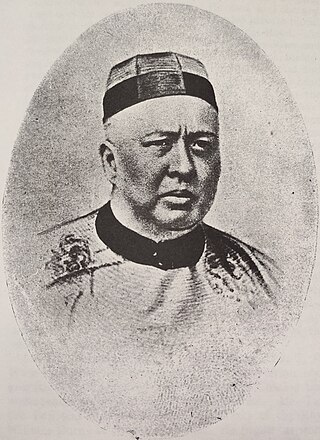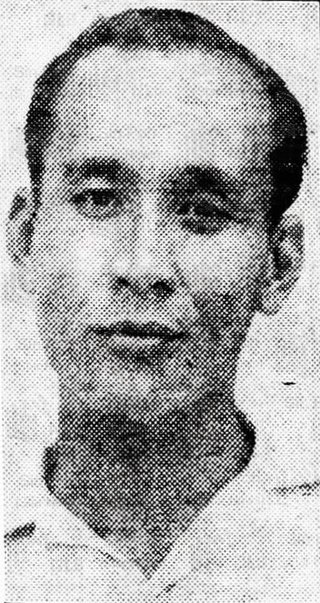
Wong Peng Soon, was a Malayan/Singaporean badminton player who reigned as a top player in Malaya from the 1930s to the 1950s when it was a single nation. Noted for his smooth but powerful strokes and graceful footwork, he won the singles title seven times in Singapore and eight times in Malaya during this period, as well as being the top player in the All England, the Danish Open, the Indian and Philippines championships to name a few.

Lim Boon Keng was a Peranakan physician who advocated social and educational reforms in Singapore in the early 20th-century. He also served as the president of Xiamen University in China between 1921 and 1937.

Seow Poh Leng one of the first few Peranakan Babas at Emerald Hill, was a prominent and successful Singaporean banker, founding member of the Ho Hong Bank, member of the committee of the Straits Settlement, philanthropist and benefactor of public development works. He was a strong advocate of limited liability trading and promoted the advantages of the Limited Liability Company system.

Tan Kim Ching, also known as Tan Kim Cheng, was a Chinese politician and businessman. He was the eldest of the three sons of Tan Tock Seng, the founder and financier of Tan Tock Seng Hospital. He was consul for Japan, Thailand and Russia, and was a member of the Royal Court of Siam. He was one of Singapore's leading Chinese merchants and was one of its richest men in Singapore at that time. He was also the first Asian member of the Straits Branch of the Royal Asiatic Society. After his father's death, he became the Kapitan Cina of the Straits Chinese community. He is believed to have been the head of the Triad in Malaya.

Sir Song Ong Siang was a lawyer and active citizen of the British Crown Colony of the Straits Settlements. He was an ethnic Hokkien as well as a third generation Hokkien Peranakan Baba Chinese with ancestry from Zhangzhou in Minnan region, and the first ever Asian in Singapore to be knighted. Song was noted for his contributions to the development of the Singapore civil society, and was held in esteem throughout the Colony.

Gan Eng Seng was a Chinese businessman and philanthropist who was one of the early pioneers of Singapore. He is known for his generosity to many charitable causes in Malaya and Singapore during the British colonial era. Some of his most recognised contributions were the setting up of Gan Eng Seng School, the Thong Chai Medical Institution, Tan Tock Seng Hospital, and the Ee Hoe Hean Club.

Mamoru Shinozaki was a journalist for Dentsu and spy for the Ministry of Foreign Affairs in pre-war years, a military executive in Japanese-occupied Singapore, and a businessman and writer in post-war years. He is known for the Shinozaki Case in 1940, and for his testimony in the war crimes trial in 1947 for the Sook Ching massacre.

Ong Poh Lim was a Malayan/Singaporean badminton player who had won numerous national and international titles from the late 1940s to the early 1960s. Known for his quickness and his aggressive, unorthodox playing style, Ong won many singles and doubles titles, including the All-England, Danish, French, Malayan, Singapore and Thomas Cup championships in the 1940s and 1950s. He also invented the backhand flick serve known as the “crocodile serve”, a tactic that had been routinely used in the modern game. Ong was a keen rival to badminton legend Wong Peng Soon.

Tan Boo Liat was a wealthy Singapore philanthropist. He was the son of Tan Soon Toh, grandson of Tan Kim Ching and great-grandson of Tan Tock Seng.

Lim Peng Siang was a businessperson in Singapore and Malaya. Together with his brother Lim Peng Mau, he founded the Ho Hong Group of companies in 1904, which had interests in banking, shipping, parboiled rice, oil mills, cement, coconut and other businesses. He was a president of the Singapore Chinese Chamber of Commerce and a member of the Chinese Advisory Board. Peng Siang Quay in Singapore is named after him.

Wee Boon Teck was the only son of Wee Bin and was the latter's successor at the firm of Wee Bin & Co., where he improved and strengthened the position of the firm. He served on the committees of Tan Tock Seng Hospital and Po Leung Kuk. He donated $4,000 to the Tan Tock Seng Hospital, which was invested by Government for about twenty years and which was then applied towards the cost of building a ward bearing his name in the Hospital at Moulmein Road. He was described as having a kindly and charitable disposition. Wee Boon Teck died on 22 September 1888 at the age of 38. Boon Teck Road is named after him.

Ismail bin Marjan was a badminton player from Malaya/Singapore who had won many individual and doubles titles at local, regional and international competitions throughout the 1940s and 1950s. He was best known for his doubles prowess as he partnered Ong Poh Lim to win several major honors in Asia and Europe. Ismail was the first Malay to have won the prestigious Thomas Cup.

Tan Teck Neo, also known as Mrs. Lee Choon Guan, was a Peranakan philanthropist and socialite.

Lim Koon Yang, was a Straits Chinese resident of Singapore. He was the managing clerk of the Braddell Brothers law firm from 1899-1932, and a manager of St. Andrew's School and St. Peter's Mission Church. At the time of his death, he was one of the oldest Straits Chinese people in Singapore, passing away at 73 years of age.

Chan Sze Jin CMG was a lawyer and a politician. He was a member of the Legislative Council of Singapore, and was the first lawyer in private practice to be conferred the CMG. He was also the second lawyer to be conferred the CMG, after Thomas Braddell, and the fourth Chinese to be conferred the CMG, after Hoo Ah Kay, Tan Jiak Kim and Loke Yew.
Tan Beng Wan was the co-founder of Tan Kim Tian and Son Steamship Company and a member of the Municipal Commission of Singapore.
Yeo Swee Hee was the Singaporean proprietor of the Cold Storage depot, a land owner, a mining contractor, a general merchant and a commission agent.

Lee Choon Guan was a Straits Chinese businessman and philanthropist. He was the head of Lee Cheng Yan & Co., a co-founder of the Chinese Commercial Bank, an elected member of the Municipal Commission of Singapore and an acting member of the Legislative Council of the Straits Settlements.

Chee Swee Cheng was a prominent Peranakan businessman and banker in Singapore and North Borneo.
The Straits Chinese Magazine: A Quarterly Journal of Orential and Occidental Culture was a magazine published by Koh Yew Hean Press. Founded by prominent members of the Peranakan community of Singapore Lim Boon Keng and Song Ong Siang in 1897, it was the first English-language periodical to be owned, edited and published by Malayans.

















